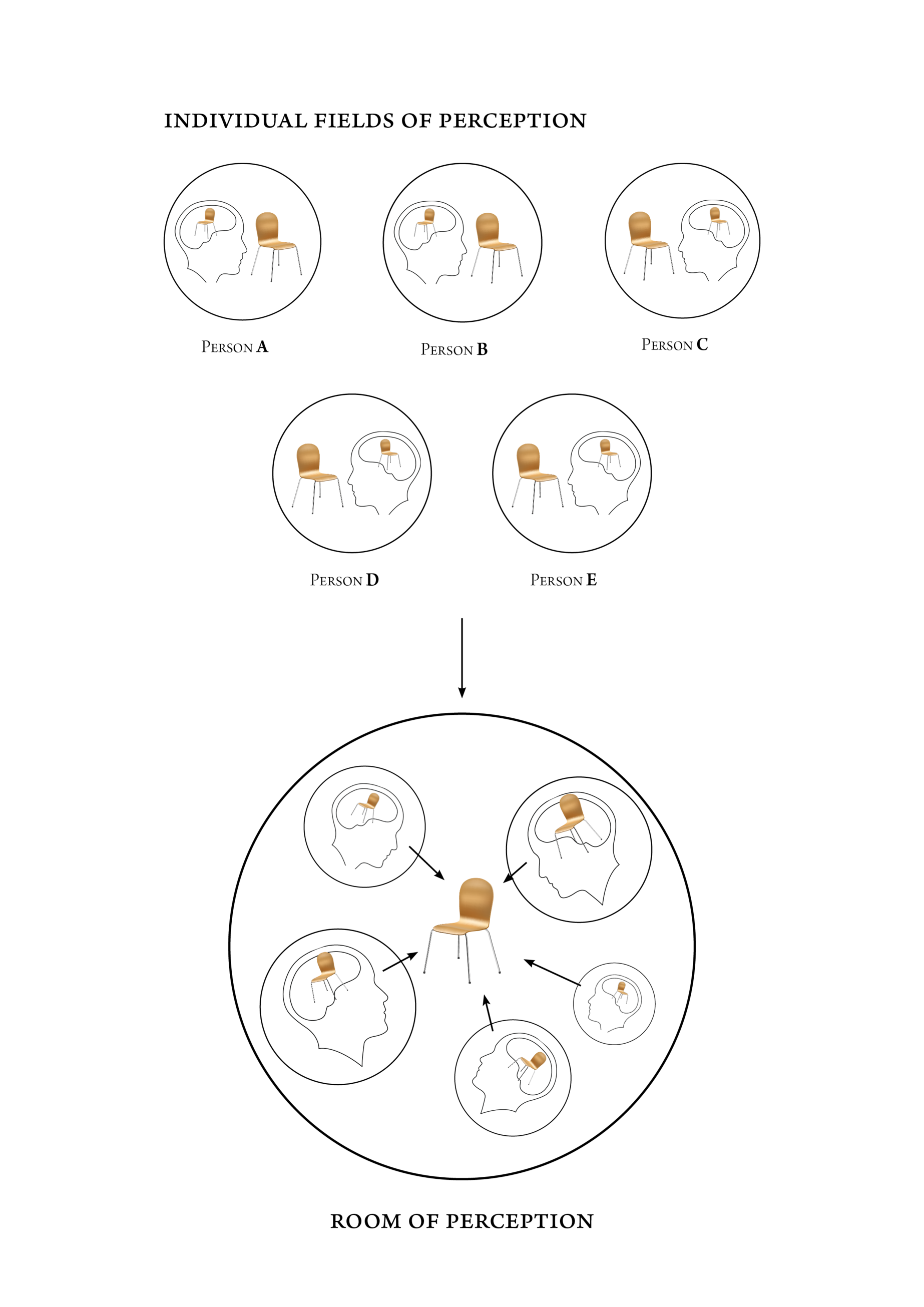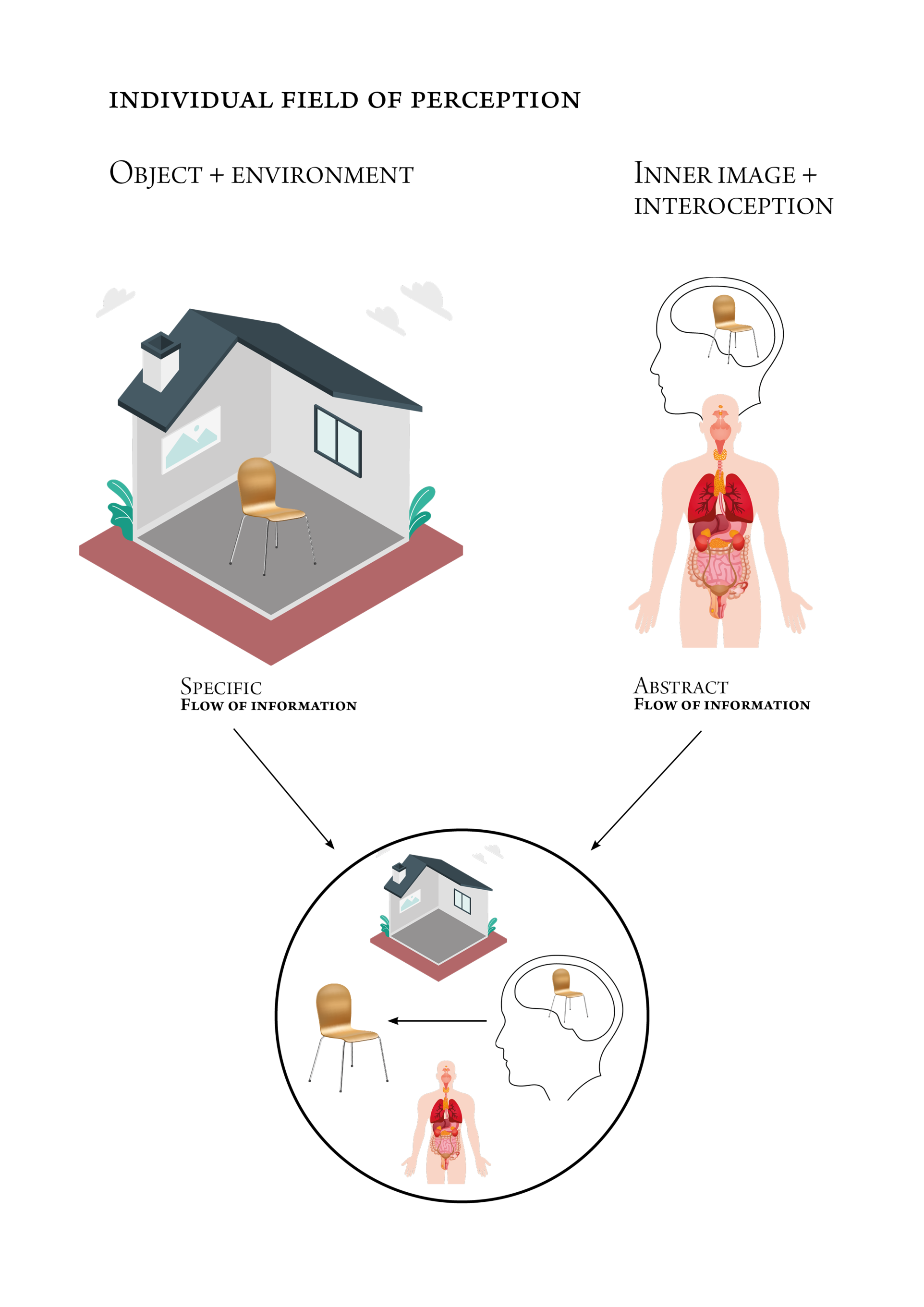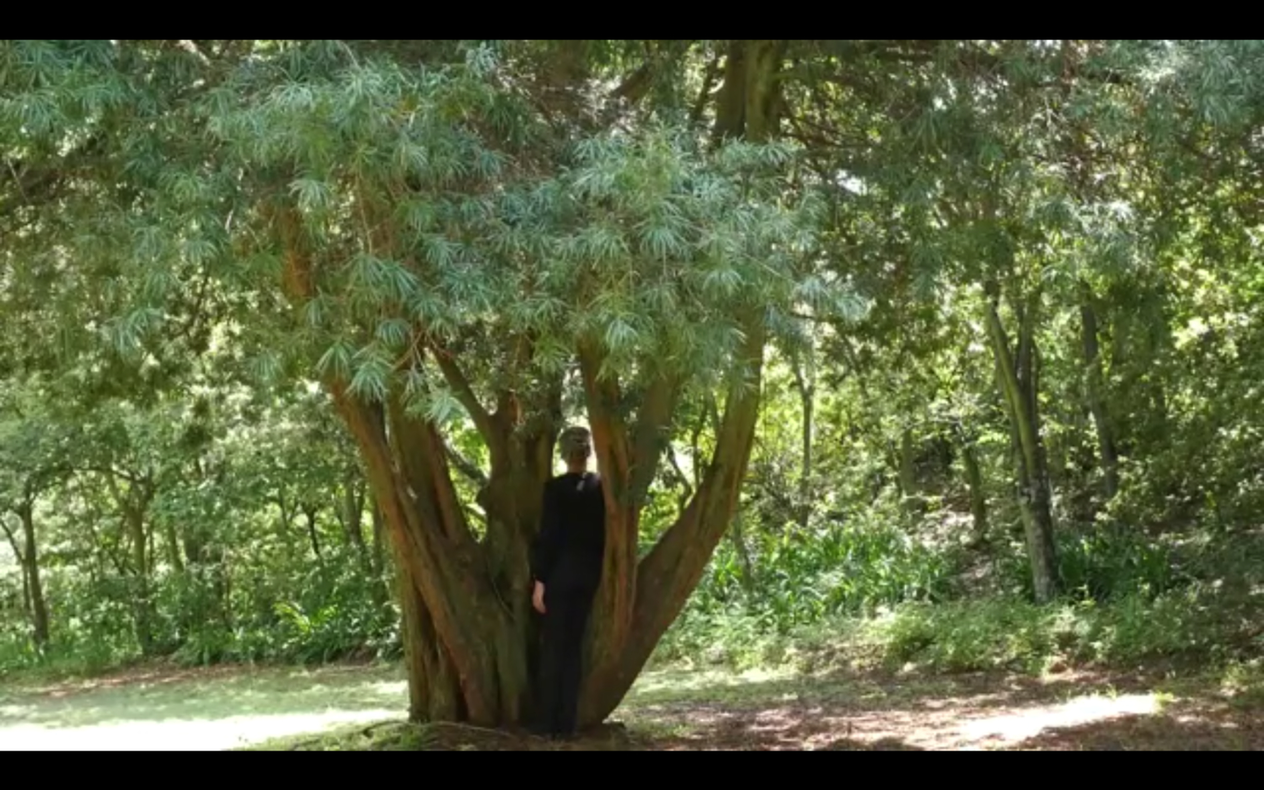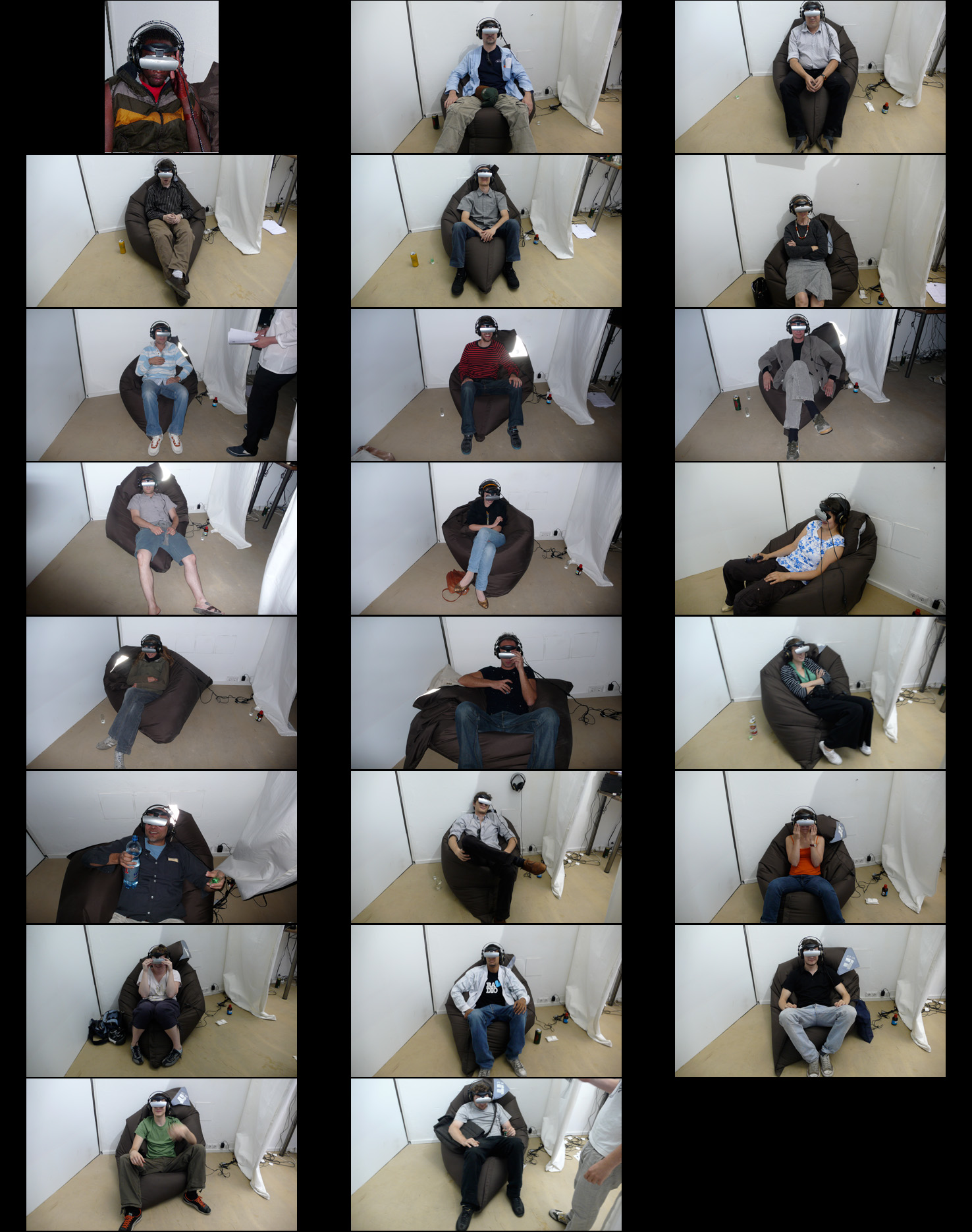In any case, if a lot of information is exchanged between two fields of perception, then it seems similar to a couple in love, which can merge mentally, emotionally, and physically in such a way that under certain circumstances new life can emerge from it. This means: the fields of perception which merge with each other can seemingly close themselves off to the outside, and build their own independent construction of inner images, dialogues, etc... Symbolically, one could speak of a common psychic space that is reinforced by bodily impulses and creates its very own image of the world - if not its own world at all.
Something similar happens in sport: the so-called team spirit, for example, is that special momentum in which all players of a team experience themselves as one unit. In this momentum, very specific inner images, dialogues, melodies, and more are created together, which do have relevance between all team members - and only the team members, like a secret code. One can therefore certainly speak of a collective, psychological construct within a certain context, in which things are perceived and outceived together. This social-psychological construction shall be noted here as a perceptual space or a room of perception.
The term space for this common inner construction is somewhat questionable, however, especially in view of the achievements of the natural sciences in the 20th century. Since Newton, space has been regarded as a closed container in which all the laws of classical physics apply. In this case, space is to be understood entirely in the everyday sense, as an architectural utility space, for example, with a certain volume. With Einstein's theory of general relativity, space dissolves into a dynamic gravitational field that has similar properties to an electromagnetic field, but which, like space-time, no longer has anything to do with the classical idea of a "container".
In terms of perceptual space, it can be summarised that a block of concrete, tangible space exists at least as far as the human sense organs reach without technical aids. Beyond that - in the depths of matter and in the vastness of the universe, i.e. in a larger context - "space" is given to a calculable imagination. The interaction between the psychological construction of space and a space consisting of tangible walls can be summarised in the room of perception that contains both concrete boundaries and infinite expanses and only acquires meaning when there is an active exchange of information between two or more persons respectively perceptual fields about it.
Two children can build a perceptual space, a family, a circle of friends, a workgroup. These are simple examples where individual perceptions are developed a new or expand meaning. And that creates reality within rooms of perception, which only becomes more and more convincing the more perceptual fields are included.
5
Assuming that the absorption and release of information in the human body is a constant process, it can be expected that information is permanently processed, similar to an electromagnetic field.
The application of the term field is somewhat questionable here since the term is primarily relevant in physics. But the term field seems appropriate, as it can be used to summarise the aggregate of all difficult-to-quantify parameters that are involved in the absorption and release of information by the human body. And in relation to comprehensive information processing, not only a person's eyesight, hearing strength, or sensitivity must be included, but also essential factors such as genetic and epigenetic preconditions, as well as the level of education, nutrition, eating habits, health, physical constitution, mindset and the living environment itself.
Therefore, it seems more appropriate to speak of a field of all possible perceptions and outceptions. Simplified, this can be described as a specific field of perception.
However, the vast amount of unknown parameters in a specific field of perception raises a question: What if the amount of all possible sensory stimuli, whether with or without technical support, inside or outside, overwhelms the capacity of the human consciousness? In order to make an overabundance of information tangible as an abstract whole, the concept of entropy will therefore be used in this context.
In thermodynamics, entropy is the term used to describe when heat or matter is added to a system. In information theory, it is a term for the average information content of a message. In the social sciences, entropy is equated with disorder or inequality. In psychology, entropy refers to a person's mental uncertainty on the one hand, and to the efficiency with which mental energy is converted into useful work on the other. All definitions of entropy have in common that the amount of disordered information decreases the more parameters are known. As well as the fact that entropy can only be observed in a closed or delimited system. In order to be able to use entropy at all in comprehensive human information processing, information processing must be able to be regarded independently of external influences.
Therefore, the general approach that all living systems must always be open systems is perhaps too inaccurate. The psyche can certainly be regarded as a system that can close itself off completely from its own body as well as from the environment.
In this case, when all information is processed mentally inside a person, and all external influences, as well as all internal organ activities, are neglected, a state of low psychic entropy can be noted. In this state, the mind is self-contained. It can be assumed that these are the states in which metacognitive activities like inner images and dialogues come to life.
Inner images and dialogues seem to compress the sensory experiences of a moment into a compact memory package so that these experiences can be recalled quickly. Highly visually inclined people may compress these experiences mainly in an image. Highly auditory people may compress these experiences into a melody or the sound of a sentence. Highly pressure-sensitive people may be very good at compressing present experiences into touch.
There are certainly other ways of perceptual compressions. In summary, it can be assumed that inner images, dialogues, melodies, and more can only be an essential part of a closed psychic system when it comes to processing experienced reality. If a human being could survive in a closed box without light and without influence from outside, this question of inner images, dialogues, melodies, and other metacognitive activities would most likely not even arise. Inner images, dialogues, melodies, and more can only come into being if and as soon as there are an inside and an outside. If an exchange takes place or has taken place and one is aware of it, and one can close oneself off to this outside and open up again.
But then another question arises: Can outception be neglected in a closed state? Most probably not. Due to the fact that information must be absorbed permanently to maintain the body, the human body will constantly and unconsciously release information simply like the body temperature. No matter how much the psyche can withdraw into itself and close itself off to the outside world - the assumption that a person could withdraw so far in a state of entropy that he or she virtually no longer exists for others is not possible. This cognitive bias is more than just a daily experience for parents of pubescent children.
This circumstance nevertheless indicates how strong a psychically closed system can shut itself off from the environment and the body. In this case, it is assumed that not only the mind of a person but also the body can be regarded as an independent instance of information processing. This is because both can be mutually exclusive, as in the case of complete internalization or a waking coma, for example.
From this point of view, not only a human psyche can be regarded as an entity in its own right. In addition to a permanent and subliminal interaction between the entity of the mind and the entity of the body, a higher intensity of information exchange is apparently necessary in order to be able to symbolically jump over that spark that causes both the emergence of unity and the opening of a closed system. If the information processing remains too one-sided in the entity of the mind, dissociative disorders, depersonalization, or escalation-like discharges seem obvious. Thus, too one-sided information processing within the entity of the body also seems to lead to fatty degeneration, anorexia, collapses, heart attacks, and similar.
The desire to run 42 kilometres from a standing start, without training, in a time below two hours, shows - even with the strongest will - what great leaps the psyche can make. But only through an intensive exchange of information, i.e. training, the pulsating dynamic between the entity of the mind and the entity of the body can overcome the centuries-old Cartesianism. Then both entities can merge with each other in such a way that, viewed from the outside, the human body can be perceived as a whole.
This unity of a human being of mind and body is understood in this context as a comprehensive information process in a specific field of perception, which can close and open. In the case of opening a psychological superposition should be able and two fields of perception should be able to overlap and reinforce each other. Thus, it is assumed that a human being in a personal encounter not only shares cognitively recognizable information (such as language, gestures, facial expressions, body posture). But also should be able to trigger the creation of common images, dialogues, melodies, and more.
A perceptual field should also be able to repel each other if there is a polar alignment, as in an electromagnetic field, or superposition in terms of quantum mechanical context.
Field of all possible perceptions: spatio-temporal construct which includes
– Newtons space, everything so far as the natural perception ranges
– space of imagination, a mental space with inner images, inner dialogues and more
Fig. 20: Illustration of a simple room of perception focussing on one object and creating an ident inner image of a concrete object without contextualization of a Newtonian space.
Hirsh, J. B., Mar, R. A., & Peterson, J. B. (2012, January 16). Psychological Entropy: A Framework for Understanding Uncertainty-Related Anxiety.
Psychological Review. https://doi.apa.org/doiLanding?doi=10.1037%2Fa0026767
Csikszentmihalyi, M. (2014). Flow and the Foundations of Positive Psychology. The Collected Works of Mihaly Csikszentmihalyi. Springer Science+Business Media Dordrecht
Fig. 16: Annette Arlander sensing a special field of perception. Video still, performance, With a Henkel's Yellowwood, 2020. https://www.researchcatalogue.net/profile/show-work?work=815793 Date accessed: June 2021
Fig. 17: Joseph KosuthOne and Three Chairs,1965




